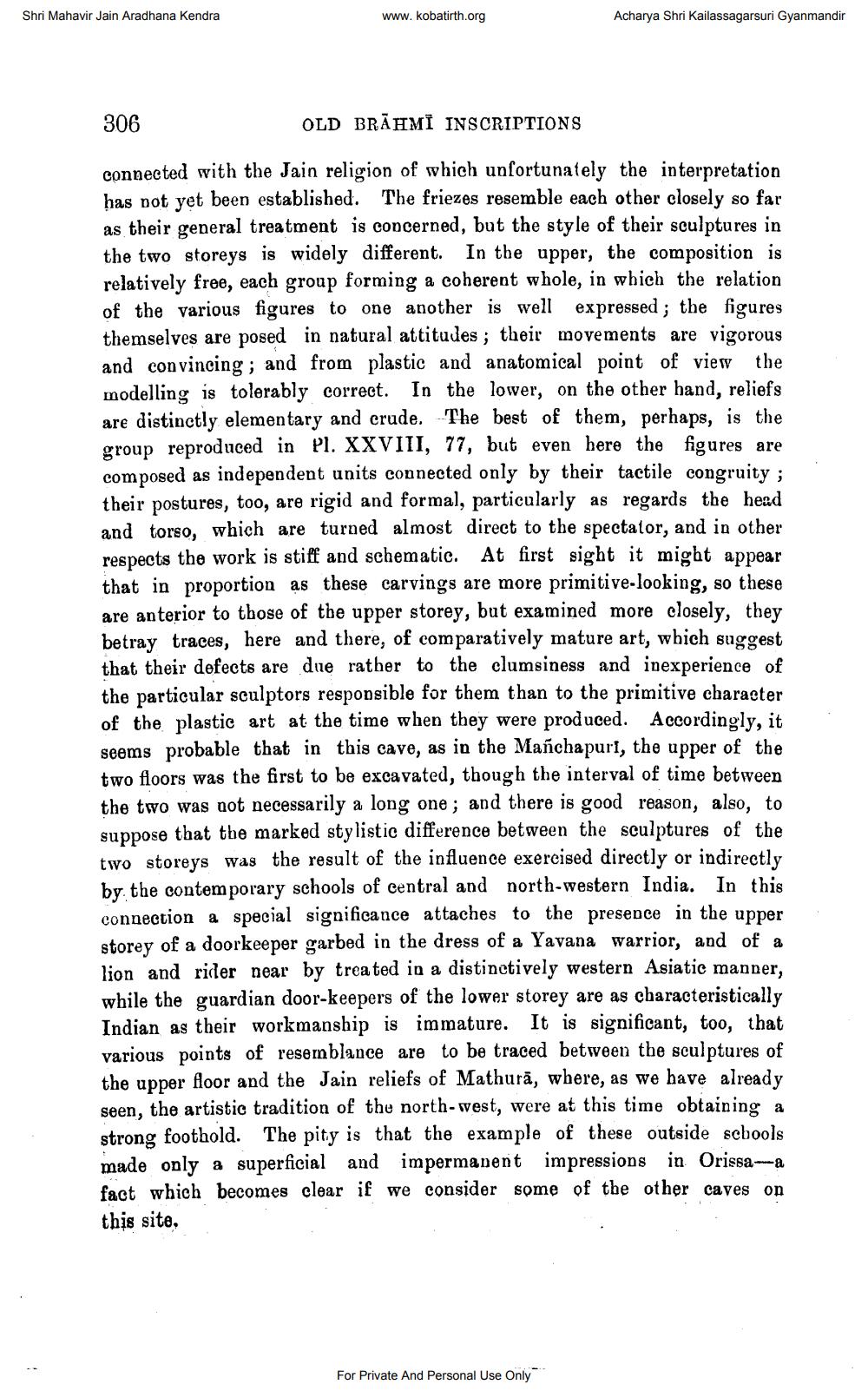________________
Shri Mahavir Jain Aradhana Kendra
www.kobatirth.org
Acharya Shri Kailassagarsuri Gyanmandir
306
OLD BRAHMI INSCRIPTIONS
connected with the Jain religion of which unfortunately the interpretation has not yet been established. The friezes resemble each other closely so far as their general treatment is concerned, but the style of their sculptures in the two storeys is widely different. In the upper, the composition is relatively free, each group forming a coherent whole, in which the relation of the various figures to one another is well expressed; the figures themselves are posed in natural attitudes; their movements are vigorous and convincing; and from plastic and anatomical point of view the modelling is tolerably correct. In the lower, on the other hand, reliefs are distinctly elementary and crude. The best of them, perhaps, is the group reproduced in Pl. XXVIII, 77, but even here the figures are composed as independent units connected only by their tactile congruity; their postures, too, are rigid and formal, particularly as regards the head and torso, which are turned almost direct to the spectator, and in other respects the work is stiff and schematic. At first sight it might appear that in proportion as these carvings are more primitive-looking, so these are anterior to those of the upper storey, but examined more closely, they betray traces, here and there, of comparatively mature art, which suggest that their defects are due rather to the clumsiness and inexperience of the particular sculptors responsible for them than to the primitive character of the plastic art at the time when they were produced. Accordingly, it seems probable that in this cave, as in the Mañchapurf, the upper of the two floors was the first to be excavated, though the interval of time between the two was not necessarily a long one; and there is good reason, also, to suppose that the marked stylistic difference between the sculptures of the two storeys was the result of the influence exercised directly or indirectly by the contemporary schools of central and north-western India. In this connection a special significance attaches to the presence in the upper storey of a doorkeeper garbed in the dress of a Yavana warrior, and of a lion and rider near by treated in a distinctively western Asiatic manner, while the guardian door-keepers of the lower storey are as characteristically Indian as their workmanship is immature. It is significant, too, that various points of resemblance are to be traced between the sculptures of the upper floor and the Jain reliefs of Mathura, where, as we have already seen, the artistic tradition of the north-west, were at this time obtaining a strong foothold. The pity is that the example of these outside schools made only a superficial and impermanent impressions in Orissa-a fact which becomes clear if we consider some of the other caves on this site.
For Private And Personal Use Only




